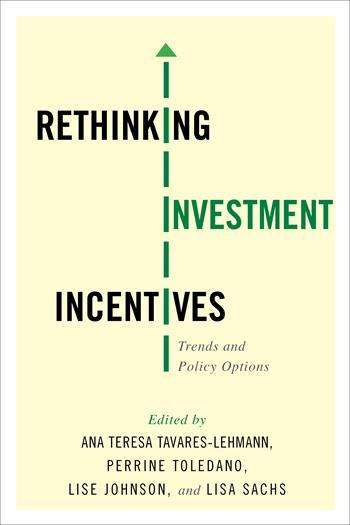Laura Katz Olson: Is Medicaid the best path to take for Health Care Reform?
The following post is by Laura Katz Olson, author of The Politics of Medicaid.
As the only industrialized nation that does not have some type of universal health care, the United States has long been overdue for reform. Nevertheless, a question remains as to whether Medicaid is an appropriate foundation for such an expansion. In my new book The Politics of Medicaid, I ascertain whether building on the program—adding millions of low-income people to its rolls—is the best means of reducing the ranks of the medically uninsured. I argue that Medicaid is and has always been a precarious program. A labyrinth of fifty separate state plans that are regularly in flux their offerings depend on economic conditions, changing partisan politics, the diverse agenda of providers, and the ideological winds of the times. National regulations and guarantees are repeatedly put aside through the waiver process, adding to the instability of the program. Medicaid’s state-by-state approach to health insurance has fostered an inequitable, haphazard, unstable, and costly system of medical care for the poor. As a consequence, the type and level of services individuals obtain depend on their geographic location and which party or governor is in power at any particular time.
The recently enacted historic Patient Protection and Affordable Care Act, which seeks to insure 32 million more Americans, hinges on a massive expansion of Medicaid. Nearly half (16 million people) of the newly enrolled population is scheduled to participate in the program through Medicaid. Already serving more than 59 million low-income people, this $333 billion federal-state jointly funded plan will in 2014 include all households with incomes up to 133 percent of the Federal Poverty Level. This development is significant, fostering not only greater coverage but also fairness in coverage across the states and among their residents. Previously, income-eligibility levels depended on where you lived. Now there will be a nationwide floor. In addition, the states will no longer be allowed to exclude specific groups who qualify financially, including parents with grown children and childless adults.
Almost from the start, fiscal issues have dominated Medicaid policies. In the best of times, the program has proven to be a source of ongoing financial strain for the states. By the twenty-first century it had become the second largest item on most of their budgets, consuming an average of 20 percent of the total. During severe economic downturns, such as that experienced beginning in 2001 and again in 2008, states face even more severe monetary problems, fostering devastating effects on plan offerings everywhere. Unemployment, the number of medically uninsured households, and Medicaid caseloads all rise just as states confront sharp declines in their general revenues. In some places, the alternating spurts of enhancements and cutbacks of benefit packages leave chronically ill and disabled Medicaid beneficiaries—those whose medical needs remain constant— in a state of uncertainty, and often panic.
Over the decades, the states have been given progressively more flexibility to design their Medicaid plans through waivers and, more recently, the Deficit Reduction Act (DRA) of 2005. Because they must balance their budgets and Medicaid has consumed an ever-increasing share of available revenues, state policymakers increasingly sought permission to take advantage of the national “flexibilities,” some to rein in spending, others to tackle the thorny issue of medical coverage for their growing uninsured residents—and some tried to do both. The spread of Medicaid to more people was inextricably linked to an undermining of national guarantees: expansions generally entailed a restructuring of existing plans, reductions in “optional” benefits for current participants, lean benefit packages for new beneficiaries, greater cost sharing for everyone, lower provider fees, and frequently a combination of all these approaches. It also encompassed an ongoing abandonment of Medicaid’s “freedom-of-choice” provision by mandating managed care, often delivered through low-quality, Medicaid-only commercial insurance companies.
One of the primary motives for relying so heavily on Medicaid for coverage expansion under the 2010 health reform bill, rather than Medicare or fully on subsidized health insurance in the private market, results from the fact that the program is far less expensive. Drafters of the law laud the cost savings that will be achieved relative to other approaches for universal coverage. However, one reason that Medicaid saves money is because it shifts some of the financial burdens onto the states. A number of Republican leaders reacted vociferously against enlarging Medicaid eligibility because of the cost, but even supporters of the act are concerned with what most likely will be an untenable drain on state budgets.
Also conspicuously absent from the debate over health reform is that Medicaid is a bargain partly because of its comparatively low physician fees, resulting in concerns about access and quality of care. Because fees are established by the states, they vary widely across the nation and are subject to constant revision, often dependent on the locality’s fiscal situation. Overall, the level of reimbursements has been significantly lower than Medicare payments and even less relative to private commercial insurance, thereby fostering a dearth of private practitioners, especially specialists, willing to treat Medicaid patients. As a result, participants increasingly must rely on understaffed, inadequately funded clinics, public hospitals and emergency rooms, or practitioners offering perfunctory, substandard care. An addition of 16 million more Medicaid clients will only exacerbate the situation.
The evidence over the decades suggests that when state budgets are strained, as they undoubtedly will be when the health reform legislation is fully implemented, governors and legislators squeeze their Medicaid plans. For the most part, elected leaders have not been willing to raise taxes as a means of funding social programs. They are more likely to eliminate some or all of their plan’s “optional” benefits, or vastly reduce their amount, leaving enrollees without essential services. Many of them will initiate or raise premiums and co-payments for beneficiaries. State lawmakers could also be expected to restrict the type and number of prescription drugs, which may be fundamental to a participant’s health.
Moreover, under the reform legislation, newly eligible adults will be guaranteed only a benchmark benefits package that provides minimum medical services. The states also can—and many probably will—use stringent application and recertification procedures to save money, as quite a few of them have done in the past, to prevent families from enrolling or forcing them from the Medicaid rolls. Quality of care is at issue as well, a concern that, for the most part, has not been seriously addressed by the reform measure. The available data paint a disconcerting picture of significant treatment and outcome disparities between Medicaid participants and patients insured elsewhere.
In conclusion, the health reform law should be commended for expanding insurance coverage to a greater number of Americans, but Medicaid is not the most suitable means for doing so. Benefit packages will continue to hinge on where people live, economic conditions, and the political will of national and state officials, rather than on an individual’s medical needs. Clearly, it is not sufficient just to increase Medicaid caseloads, as is the situation with the Patient Protection and Affordability Act. Policymakers must also consider the availability of services, along with their scope, intensity, and quality of care.




